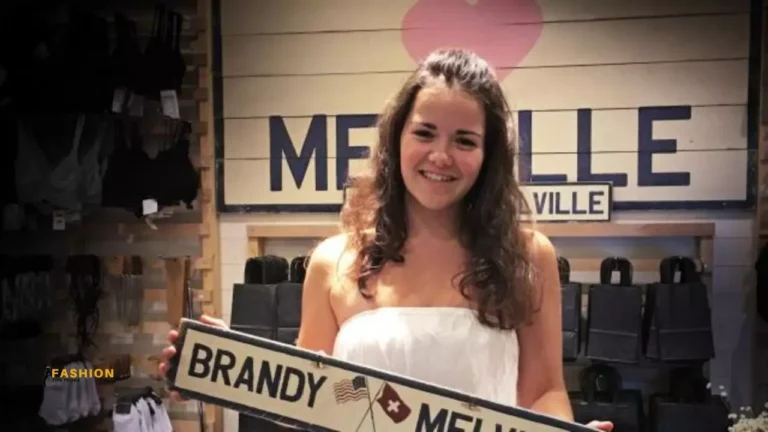The HBO documentary “Brandy Hellville & the Cult of Fast Fashion” exposes the dark realities of Brandy Melville’s work environment and the broader issues within the fast fashion industry. Director Eva Orner delves into allegations of racism, sexism, and exploitation while highlighting the destructive environmental impact of consumerism. Orner’s message is clear: to combat these issues, consumers must rethink their shopping habits and “buy less.
Why choose Brandy Melville to highlight labor and environmental issues in fast fashion?
Brandy Melville stands out among other companies for its egregious practices. Unlike some other brands like Zara, Shein, and Fashion Nova, Brandy hits every negative mark: it embodies fast fashion, exploits young and underage workers, engages in racism and antisemitism, and operates in a creepy and discriminatory manner. Kate Taylor’s exposé for Business Insider highlights that Brandy Melville is not your typical company—it is deliberate and opaque, which adds to the complexity of its story. Additionally, Brandy has a strong cult-like following, with supporters who staunchly defend the brand. Overall, Brandy Melville’s practices paint a dark picture in the fashion industry.
How was the process of getting people with firsthand experience to appear on camera?
I’ve worked on many films in challenging environments, but when I began this project, I faced difficulty getting people to speak out. We reached out to hundreds of girls, but many were hesitant due to fear of the company, its owners, and potential career repercussions. I respect their concerns—it’s not easy to be a whistleblower. However, the women who did agree to participate are incredibly brave, fearless, and honest. They are the heroes of this story. Most of the women I spoke with, around 95 percent or more, were initially reluctant to be in the film.
Were there any unexpected surprises while making the film, given the prior reports about Brandy Melville?
During filming, we uncovered some alarming truths. For example, young, inexperienced employees were asked to submit photos to management, making them easy targets for manipulation. The CEO even installed a button in a New York store to signal when he saw an attractive customer, leading to uncomfortable job offers. It was disturbing to realize that the company’s male leaders, who all have young daughters, promote unrealistic ideals of womanhood. But what struck me the most was witnessing the environmental impact firsthand on a beach in Accra, Ghana. Seeing where our discarded clothes end up was a powerful reminder of the consequences of our consumer choices, and I hope it resonates with viewers of the film.
Is there a specific audience you’re aiming for with the documentary, like teen girls?
Since the trailer dropped a week ago, it’s blown up on TikTok with over 2.8 million views—a big deal for a documentary. I’ve been flooded with messages from young women on Instagram who connect with the film and want to get involved. The buzz on TikTok, where teenage girls hang out, is particularly exciting. I think the documentary has found its groove there, and I hope that energy spreads to a wider audience. Parents are another key audience—I hope they watch it with their kids and are shocked by what they see. I imagine the film being shown in schools and colleges, sparking important discussions. Hopefully, it becomes a hot topic, like those water cooler chats at work. It shows how powerful TikTok can be for spreading awareness, as long as people keep sharing the film instead of shopping for clothes.
Addressing Fashion Industry Issues: Discoveries from the Film
There are many ways to make a difference. You can rent clothes or create a small wardrobe with timeless pieces. Buying and selling secondhand clothes is also a great option, whether you’re shopping on Depop or RealReal. However, these solutions only scratch the surface. The biggest issue is that there are simply too many clothes being produced. Liz Ricketts from the Or Foundation suggests that we should stop making clothes altogether. Imagine if we all just had less—wouldn’t that be amazing? It would require a major change in behavior, but I believe consumers have the power to make it happen.
Brandy Melville’s Global Business and Cultural Impact
Celebrities like Lily-Rose Depp wearing Brandy Melville make it appealing, especially to young, slim women, which worries me. The brand is growing in popularity, even in Australia, where I’m from. I hope this documentary can change that, especially since the brand isn’t as well-established there. Right now, Brandy Melville seems unstoppable, but the solution is simple: stop buying their clothes. If this film reaches a global audience through HBO, it could significantly reduce their sales. Young women have the power to make a difference by creating content, talking about it online and offline, and boycotting the brand.
FAQS.
How can I make my fast-fashion documentary stand out amidst competition?
Focus on unique angles and storytelling approaches that resonate with your target audience. Highlighting personal narratives and innovative solutions can set your documentary apart.
What role does audience engagement play in the success of a documentary?
Audience engagement is pivotal for creating meaningful impact and fostering dialogue. Utilize interactive elements, such as social media polls and live discussions, to actively involve viewers in the conversation.
How can I ensure the accuracy and credibility of the information presented in my documentary?
Conduct thorough research, fact-checking, and verification processes to ensure the accuracy of your content. Cite credible sources and seek input from subject-matter experts to uphold journalistic integrity.
What are some effective strategies for promoting a documentary to a wider audience?
Utilize a multi-channel marketing approach, including press releases, influencer partnerships, and film festival submissions, to reach diverse audiences and generate buzz around your documentary.
How can I address sensitive topics within the fast-fashion industry without causing controversy?
Approach sensitive topics with empathy, transparency, and a commitment to balanced storytelling. Provide context, multiple perspectives, and space for nuanced discussions to navigate potentially contentious issues.
What impact can documentaries have on driving societal change and awareness?
Documentaries have the power to spark conversations, challenge perspectives, and inspire action. By shining a spotlight on pressing issues and advocating for positive change, documentaries can catalyze meaningful societal shifts.

